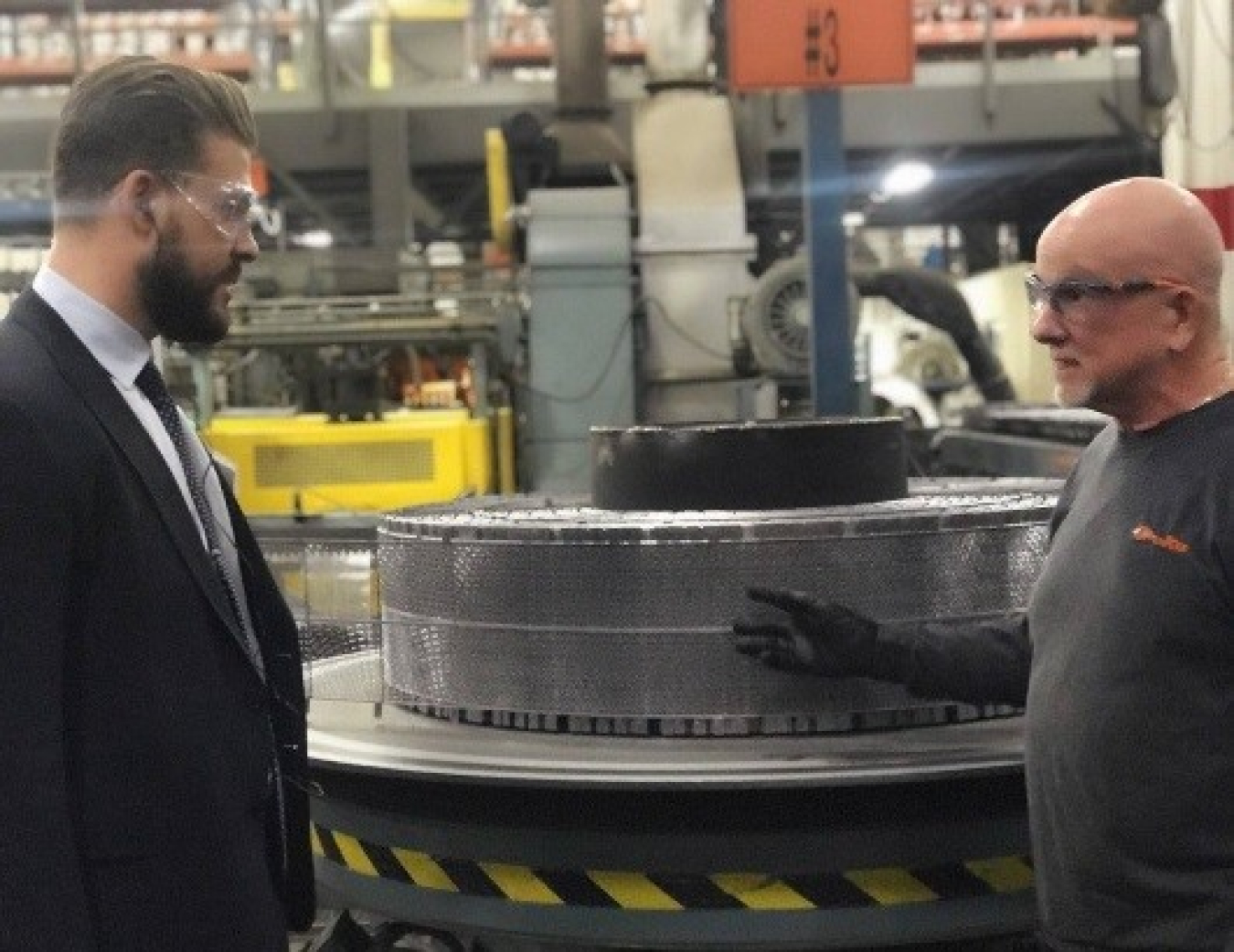The Administration believes a strong American manufacturing sector is critical to maintaining global competitiveness and national security
Office of Critical Minerals and Energy Innovation
February 19, 2019The Administration believes a strong American manufacturing sector is critical to maintaining global competitiveness and national security, and our manufacturing sector is really booming. As President Trump noted in his State of the Union, our policies have launched an unprecedented economic boom. We have created 5.3 million jobs, including 600,000 new manufacturing jobs.
At the U.S. Department of Energy (DOE), we occupy a unique position at the intersection of energy and manufacturing, providing an undeniable opportunity to fuel manufacturing’s continued growth. To that end, this past year, DOE announced a series of collaborations focused on manufacturing competitiveness.
One highlight was the Sustainability in Manufacturing Partnership, announced by Secretary Perry as a joint effort with the National Association of Manufacturers (NAM) to help U.S. manufacturers drive energy productivity improvements and accelerate the adoption of energy efficient technologies. DOE’s Office of Energy Efficiency and Renewable Energy (EERE) also launched the Manufacturing Innovator Challenge in partnership with Freelancer.com, the world’s largest crowdsourcing platform. The Challenge targets advances in 3-D printing.

DOE is committed to the development of next generation manufacturing technologies that will keep jobs here at home, ensure products are made in the United States, and strengthen America’s manufacturing industrial base. One of the ways we do this is through collaboration with the private sector in the form of a CRADA, or a Cooperative Research and Development Agreement. These public-private partnerships help drive innovation, accelerate commercialization, and set the tone for the future of energy. One current recipient of a CRADA is East Penn Manufacturing (located in Lyon Station, Pennsylvania). The collaboration will enable East Penn and RSR Technologies to use Argonne’s state-of-the-art analytic technologies to accelerate the research of lead batteries in order to enhance performance.
I had the chance to tour East Penn’s facilities in late 2018. They are one of the country’s oldest – and its second largest – lead battery manufacturer. Batteries are a driving force in our energy and manufacturing future across multiple sectors, including transportation, energy storage, and consumer electronics. One example of East Penn’s innovations is their ability to recycle the electrolyte from lead batteries, enabling them to turn a waste into a resource. This “circular” practice extends to other resources the plant uses a lot of, such as water: East Penn recycles its wastewater through a closed loop system, meaning the water is used and reused onsite.
EERE’s recent accomplishments in advancing battery technologies are noteworthy. Our work on lithium ion batteries has made a significant market impact. Did you know that almost all hybrid and electric vehicles incorporate EERE-funded battery technology? EERE achieved its 2018 Electric Vehicle battery pack cost reduction milestone of $197/kWh. The cost assumes a production volume of at least 100,000 batteries per year and is for batteries meeting DOE/USABC system performance targets. DOE’s goal is to continue to drive down battery pack cost to $100/kWh by 2025. By 2030, EERE is focused on increasing battery range to 300 miles per charge as well as reducing charge time to an impressive 15 minutes or less, while reducing battery cost to $80/kWh (reaching cost parity with conventional vehicles without Federal incentives).
Battery innovation is also fueling real economic growth. According to Battery Council International, "the [battery] industry directly employs 20,550 workers, spends $1.4 billion annually on payroll and generates $11.6 billion in output, or business sales." East Penn is a living example of that, employing 8,000 people in a town of just 480, to manufacture 150,000 batteries every day that are used in traditional light, medium, and heavy duty vehicles; boats;lift trucks; locomotives; back-up power; and stationary energy storage.
The Administration’s tax cuts have bolstered America’s resurging manufacturing sector. East Penn is no exception as they have been able to create over 1,000 new jobs in the U.S. since January 2017. The company’s success has unlocked funds to increase capital spending, reinvest in its East Lyons plant and people, as well as open a new plant.
Today more than ever, our future is bright, not only for our energy choices, but for U.S. manufacturing and the ever-important battery. As President Trump’s Manufacturing Day 2018 proclamation stated, "My Administration is working tirelessly to create an environment wherein manufacturers and their workers have increased opportunities to grow and create jobs." At the U.S. Department of Energy, we will continue to do our part to drive innovation through our investments in early-stage R&D and through our partnerships with companies like East Penn. My thanks to all at East Penn Manufacturing for the up-close peek into their battery manufacturing process and commitment to American jobs.
Kevin Jayne is Senior Advisor to the Office of Energy Efficiency and Renewable Energy’s (EERE’s) Assistant Secretary.

